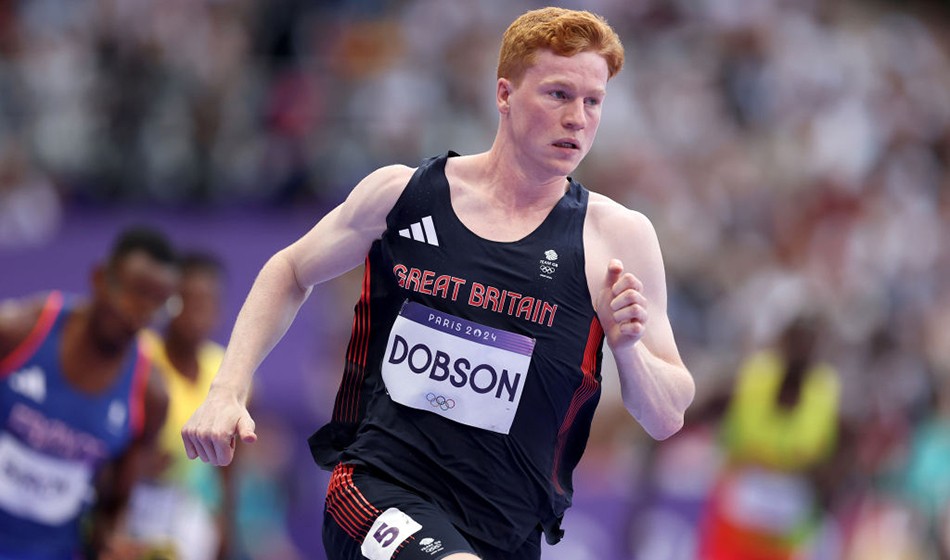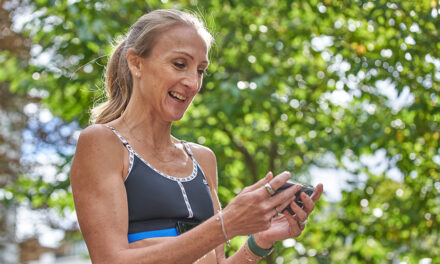We speak to the European silver medallist and aeronautical engineering graduate who is excelling at his 400m crash course
There’s definitely room for improvement,” reflects European Championships 400m silver medallist Charlie Dobson. It’s not a criticism of his recent 44.38 lifetime best performance – he says he ran ‘a very good race’ in Rome – but a subtle acknowledgement that there’s potential to go quicker.
“I think the biggest thing for me is still learning how to run the 400m. Looking back at the splits [11.13, 21.52, 32.38, 44.38 in Rome] there’s definitely still a lot of room for improvement in the way we approach the race and the way we set it up, but that’s something I’ll figure out.”
Like so many great stories, the intrigue is in the unknown.
Dobson, ranked fifth on the UK all-time list, is still relatively new to this game. A 200m silver medallist at the 2018 World U20 Championships, the Colchester athlete was persuaded to take on the 400m by his former coach (Benke Blomkvist) and fellow athletes and made his debut at the 2020 Loughborough August Invitational with 45.84.
His current CV is impressive: 4x400m gold and fourth in the 200m at the 2022 European Athletics Championships; 4x400m bronze at the 2023 World Athletics Championships; and 400m silver at the 2024 Europeans in only his eighth race over the distance. He missed the delayed Tokyo Olympic Games in 2021 due to a stress fracture in his shin, but making his Olympic debut in Paris is definitely a silver lining.

Charlie Dobson (Getty)
Now in his first year as a full-time athlete – he graduated with a first-class degree in aeronautical engineering last summer – and just nine months after linking up with coach Leon Baptiste, Dobson’s potential has still not been fully realised.
“In terms of training, this is the first year I’ve focused more on the 400m than the 200m,” says the 24-year-old. “We’re certainly further ahead than I thought I’d be at the start of the season, but there are obviously things to work on in the race to improve further, like pushing out harder.
“We train more like a 200m/400m sprinter. That’s the approach Leon wanted to take and it’s clearly paid off so far, being able to retain my speed but also working on the strength endurance part of it. I never really did too much of that beforehand so that’s had a massive impact.
“Having the time to rest and recover and not having exams to do, especially at this time of year, has also made a huge difference.”
Experience is everything and Dobson has benefited from a crash course in 400m running in 2024. His 44.46 in Savona (Italy) in May – a personal best at the time by half a second – taught him a lot about his physical and mental capabilities as he made his final preparations for the European Championships and looks ahead to the rest of the summer.

Charlie Dobson (Chiara Montesano)
“I think I’ve figured out different ways to approach each race mentally,” he says. “I was going into the unknown in Savona as it was my first race of the season. I wasn’t sceptical, but I was unaware of what I could run. I learned a lot from that day and it really boosted my confidence going into Rome. I thought: ‘I know I can do this now because I’ve done it previously’.
“I think getting used to racing and getting more confident racing is a huge thing. The first time you do anything you’re fairly tentative with it, especially for big races and big competitions, but now I’ve proved to myself that I can run these times – and going into the British Champs and hopefully Paris – I think that’s going to be of huge benefit to me.”
Training takes place in the morning and is followed by prehab exercises for strength and injury prevention.
“With Leon we’re very adaptable, so the sessions can change depending on how the body is feeling,” says Dobson, who is also a keen golfer and photographer.

Charlie Dobson (Mark Shearman)
Monday: short speed/acceleration work (for example, blocks to 20/30/40m x 2 each) followed by longer runs on the curved (self-powered) treadmill (for example, 30sec efforts) or on grass in early winter (for example, 250m/300m reps); gym session
Tuesday: active recovery with focus on mobility, hurdle mobility work, core strength and medicine ball throws
Wednesday: tempo session such as longer runs of up to around 80 per cent effort (in middle-distance spikes or trainers) on track, grass or curved treadmill “depending on how everyone is feeling”. For example, 250m plus 4x100m with walk back recovery between reps. Focus on form.
Thursday: rest day
Friday: focus on technical work. For example, running over wickets and working on stride patterns and frequency. “It’s not about increasing stride length for me, but working on reducing my stride length and putting my foot down earlier,” says Dobson. “We identified an issue where my foot would get away from me and I’d land very early which was putting a huge amount of stress through my hamstrings. We do a lot of work on reducing how much my foot kicks out on front of me, so I’ve found wickets really beneficial for that.” Wickets followed by faster runs up to 300m/350m in spikes (at around 90-95 per cent effort), then gym session.
Saturday: active recovery (as Tuesday)
Sunday: rest day
READ MORE: AW’s how they train articles
Favourite session: “Anything with competitive blocks in it. When I see that on the programme I think: ‘Yeah, it’s going to be a good day!’ They’re only ever 30-40m maximum, but it’s one of the few chances in training that you get to properly hit a run and you get an extra hit of adrenaline, especially when you’re doing it alongside some of your training partners. It’s just good fun.”
Least favourite session: “We did a slightly longer tempo session and we finished with a 500m (after a typical speed-endurance session). We started at the 100m mark and I got to 400m thinking: ‘We’ve still got a whole lap to do!’ That one hurt.”
» This feature first appeared in the July issue of AW magazine. Subscribe here







